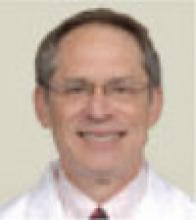The solo physician holds a special place in the hearts of family physicians. Whether we think of the watchful doctor at the bedside of a feverish child or the tireless rural doctor on snow-covered roads, we romanticize the past, with images colored by TV doctors like Marcus Welby or Joel Fleishman (before E.R., St. Elsewhere, and Scrubs provided a more checkered perspective). While we wistfully remember practitioners of the past, our government seems to be doing its best to force clinicians into a homogenized practice model. And that’s very bad for our country.
As of 2008, according to the American Academy of Family Physicians, less than 18% of FPs described themselves as solo practitioners (another 8% were in a partnership with another physician). And recent policies, from dwindling support for rural clinicians to mandates for EHRs and the push for accountable care organizations, are further contributing to the solo practitioner’s demise. Economic decay and decades of decline have left rural communities and inner cities particularly ill-equipped to support sustainable practices. That’s a tragedy for America.
While most young doctors are joining large integrated groups, which promise better balance and predictable schedules with little, if any, call, the extraordinary, albeit sometimes idiosyncratic, approach to medicine practiced by solo FPs today is often overlooked. Nimble (no bureaucracy to consult when changing policies), in touch (no one knows the local population better), and increasingly likely to use EHRs and health information exchanges (like physicians in larger groups), these doctors are paving the way to a brighter future. Whether they’re focusing on lean design, integrating concepts of public health, or creating environments that foster holistic healing, I see a lot of innovation and passion among solo practitioners who aren’t afraid to take risks or fight for their patients. Moreover, practices with only one or two physicians are frequently on the cutting edge of change and leaders in providing quality health care. What’s more American than that?
Here’s the bottom line: In addition to supporting the Kaiser Permanentes and Geisingers of the world, we need to help doctors working alone and in small practices thrive. To do that, we need funding for infrastructure, relief from needless regulation, and new opportunities for virtual networking and collegiality. And make no mistake: The investment will pay off, even in these tough economic times. Maybe then we’ll be fortunate enough to see a resurgence of the solo family physician.


